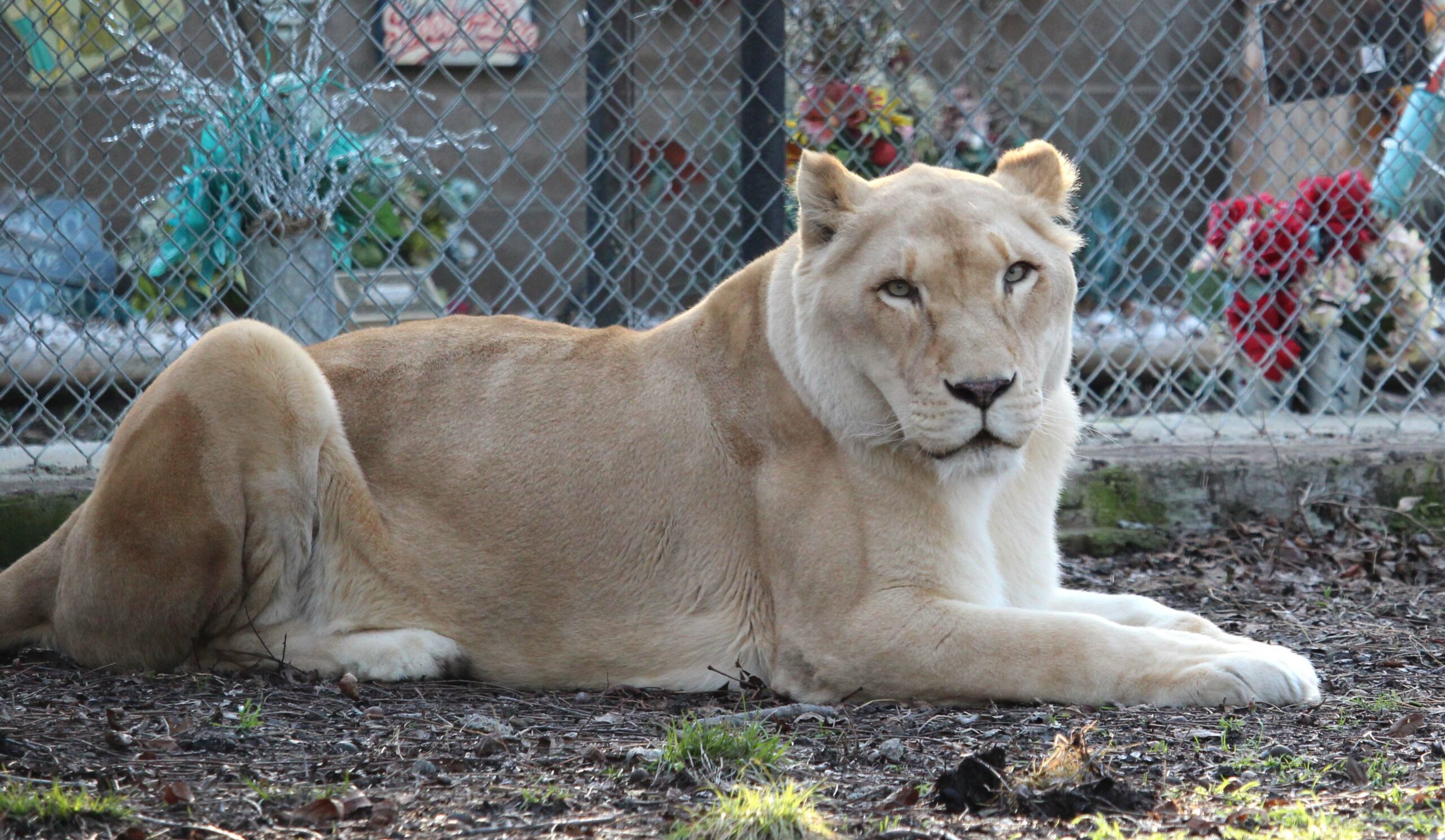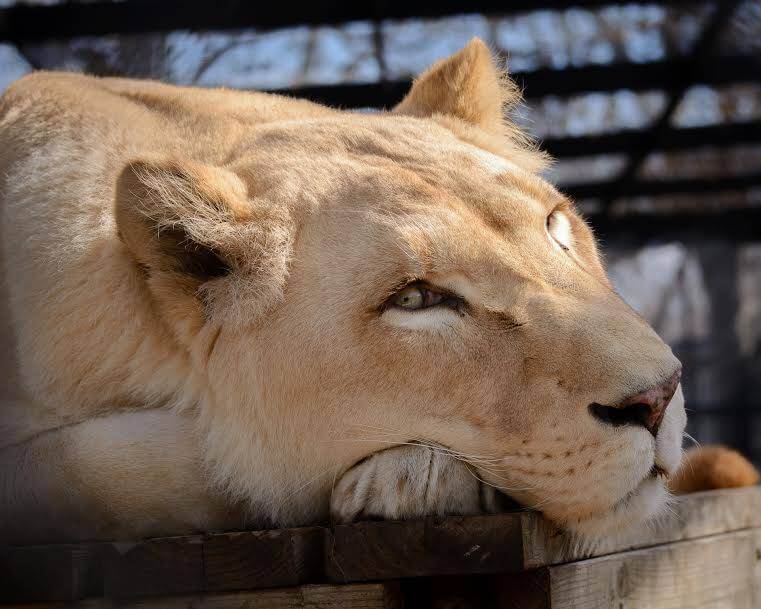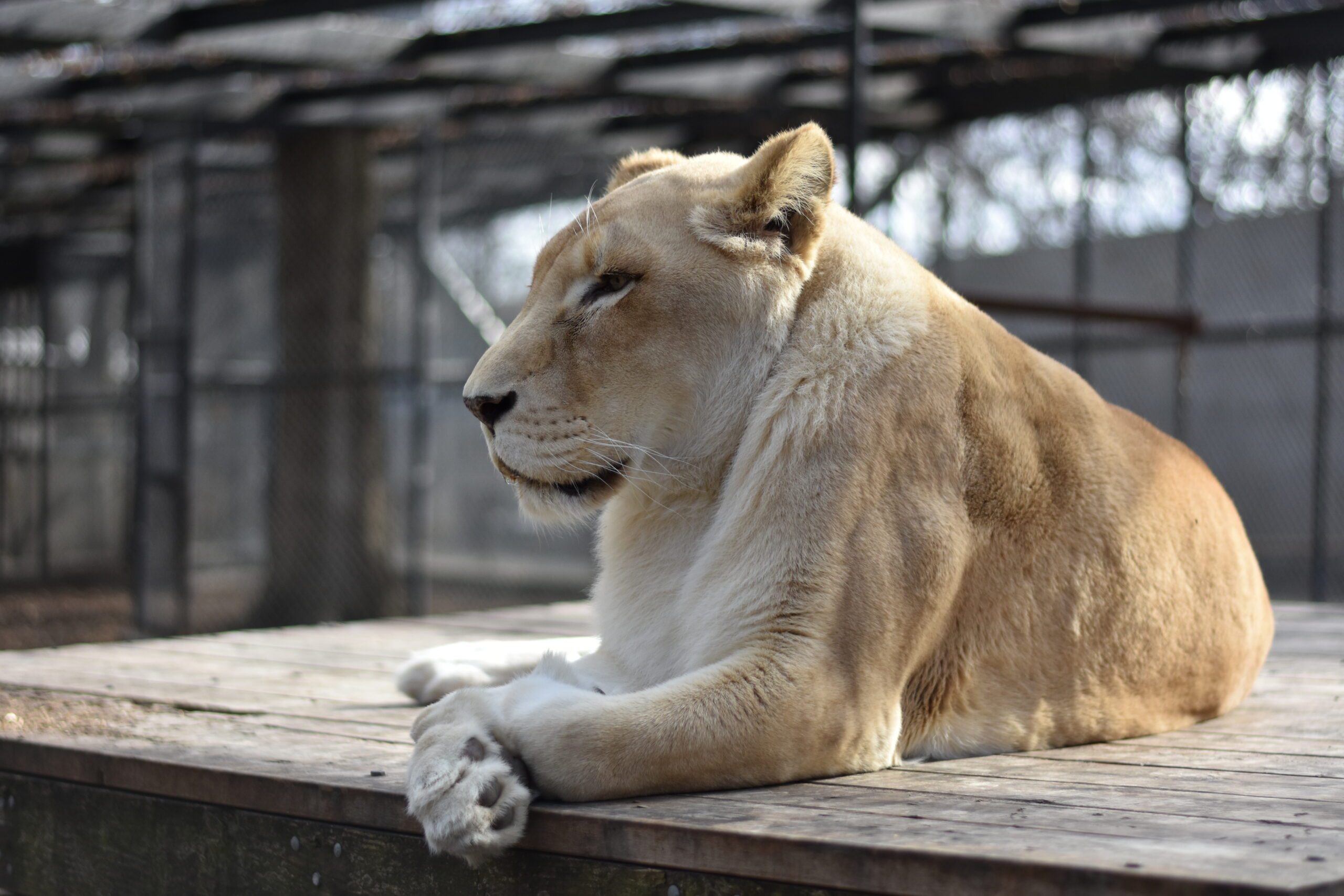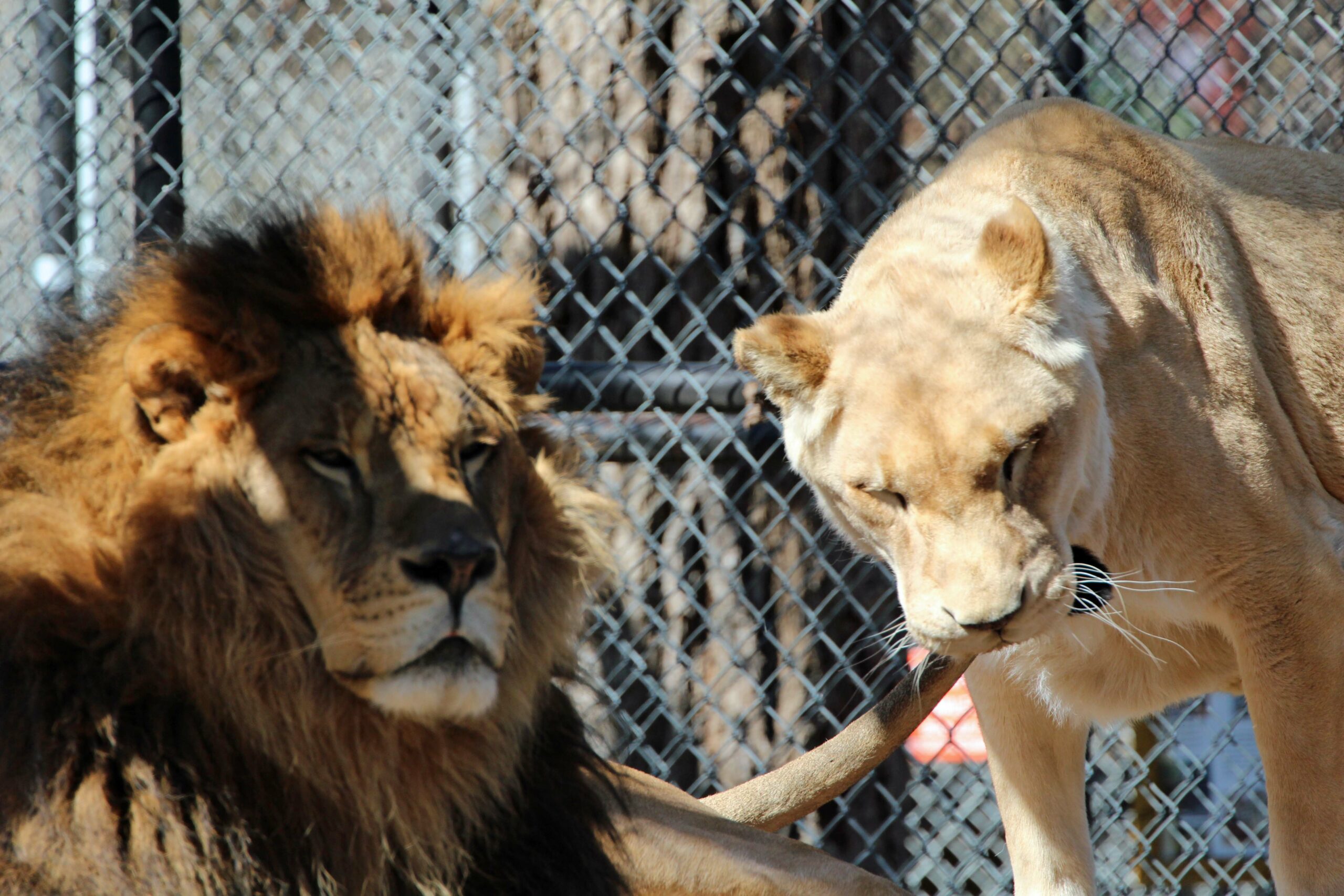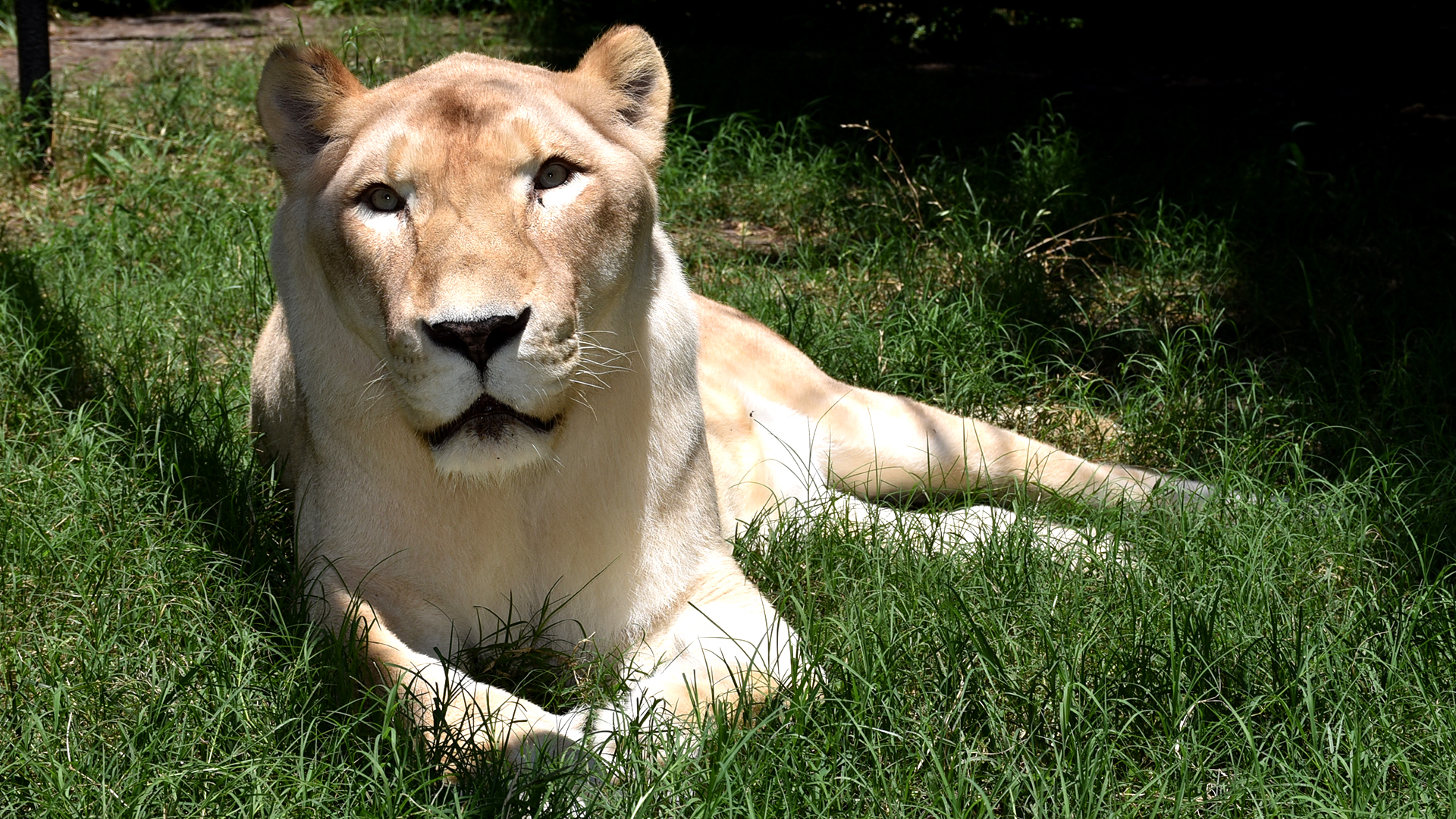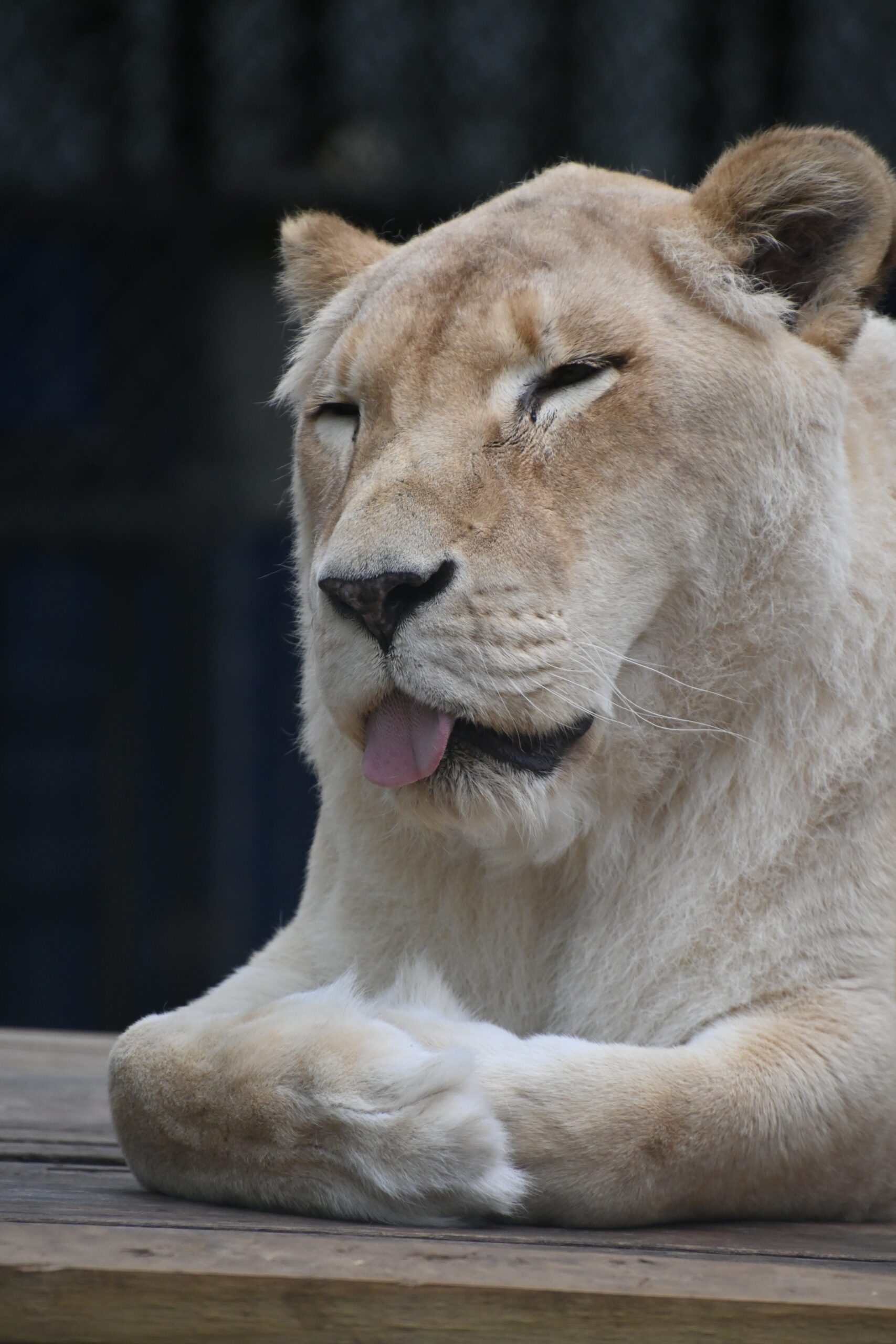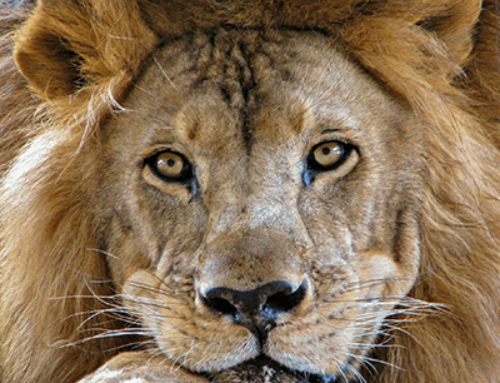In July of 2009, we received an urgent call from USDA saying that they had three white lions that had just been confiscated from the same neglectful owner of an entertainment facility who had previously owned several tigers and a lion that we rescued. We spent a night modifying an existing enclosure so that we could be ready for the three lions. The next day, we welcomed them home.
When they arrived, we were completely horrified. All three lions, one female and two males, were in heartbreakingly horrible condition. Sheila was in the worst condition and arrived emaciated, filthy, and lethargic. She had very little muscle coordination and when she tried to walk, her legs would slip out from under her. Her head had a heavy tilt to the right, so it was difficult for her to hold it upright. She was so weak that even drinking and eating was difficult for her. It was impossible for her to hold her head above the water bucket and she had a hard time swallowing her food. Her condition was so horrible, that the USDA warned us that we would probably have to euthanize her.
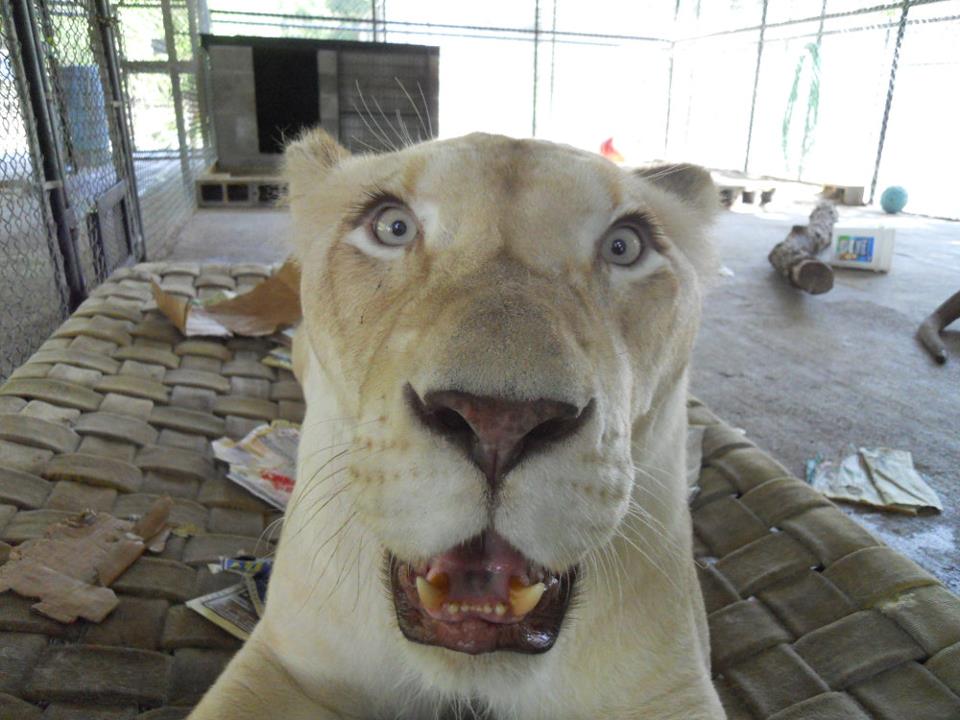
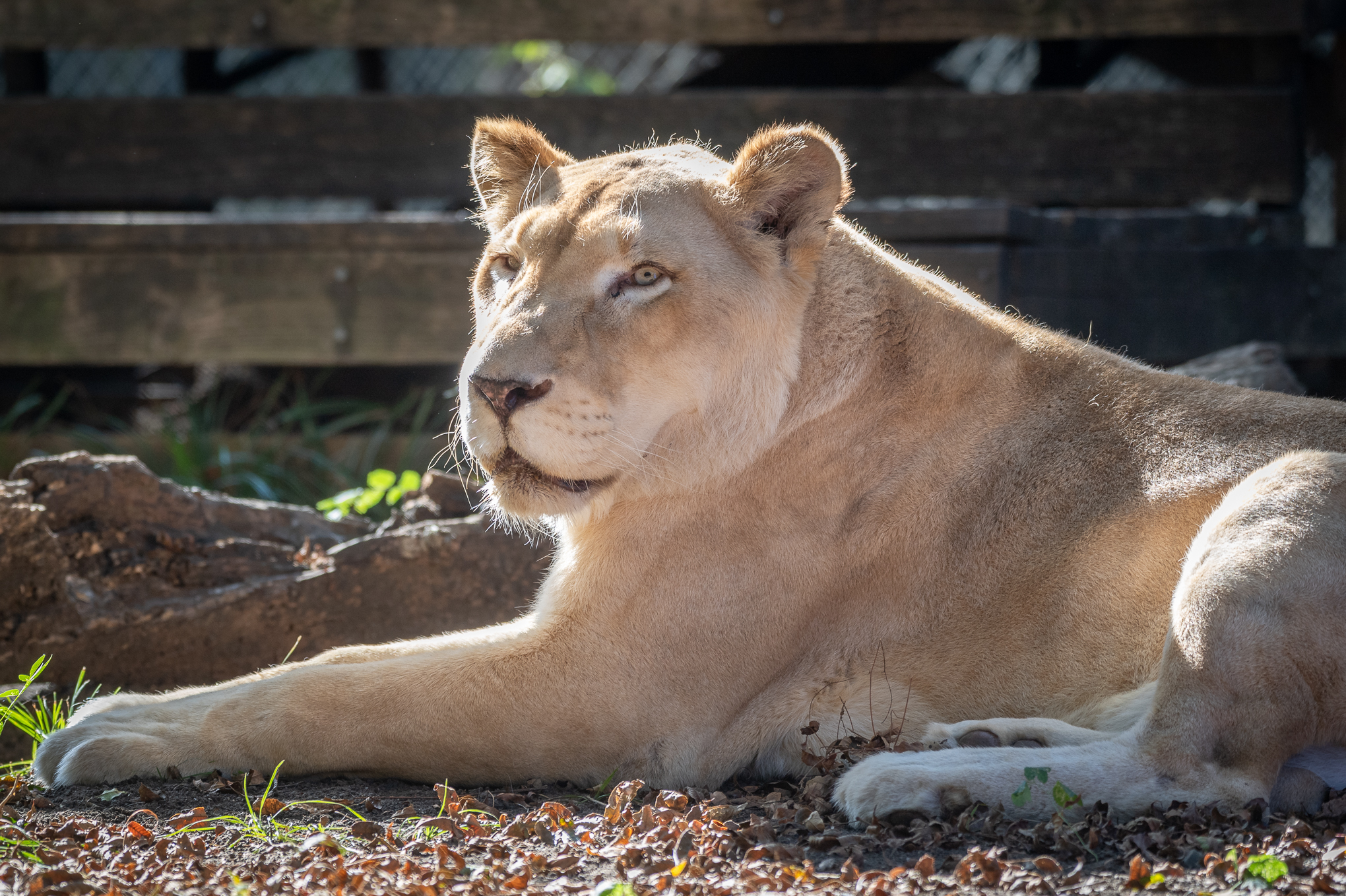
Four days after she arrived, Sheila was fading fast. She was now vomiting, continued to be lethargic, and was laying flat on the ground. We feared the worst, but never gave up on Sheila and continued providing round the clock care to save her.
The USDA had told us that Sheila showed signs of vitamin A deficiency, but through our own research, we found that toxoplasmosis had the same symptoms as vitamin A deficiency, except for one additional symptom. Animals suffering from toxoplasmosis often exhibit constant circling, which Sheila displayed when she attempted to walk. With this new finding, we immediately started Sheila on clindamycin.
Two days later, she was walking around. Four days later, she was eating and swallowing. After a week, she was gaining weight and playing happily. We began breathing a little easier, overjoyed that this brave girl seemed to be on the mend. Test results came back and confirmed toxoplasmosis and a severe vitamin A deficiency. Sheila continued to improve every day with the proper medication, nutrition, and lots of love. She is now a happy, healthy, and beautiful white lioness. She shows no ill-effects of either condition aside from occasional circling and a slight tic, nystagmus, in her eyes. She is at a healthy weight, regained muscle control, swallows easily, and runs and plays.
Sheila’s unique coloring is the result of a recessive gene called “chinchilla” or “color-inhibitor” and is only found in the wild in the Kruger subspecies of lion which is unique to the Timbavati region of South Africa.
Once Sheila regained her strength and got spayed, she lived with Kahn, a male lion who happened to be rescued from the same awful place. They loved each other very much and Sheila was definitely the boss in that relationship. When Kahn passed, we didn’t want Sheila to be alone and we noticed another one of our male lions always had eyes for the beautiful Sheila. After many months of slow introduction, Sheila now lives with Athos. Again, she is the boss of their relationship. They can often be found lounging in the sun on the playground together, practicing what we call “couples yoga,” or conspiring together to swindle as many treats as possible from the keepers when it’s time for them to come in from the playground.
